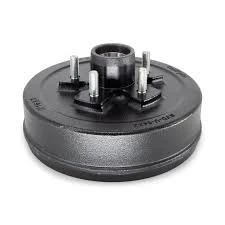
-
 Afrikaans
Afrikaans -
 Albanian
Albanian -
 Amharic
Amharic -
 Arabic
Arabic -
 Armenian
Armenian -
 Azerbaijani
Azerbaijani -
 Basque
Basque -
 Belarusian
Belarusian -
 Bengali
Bengali -
 Bosnian
Bosnian -
 Bulgarian
Bulgarian -
 Catalan
Catalan -
 Cebuano
Cebuano -
 Corsican
Corsican -
 Croatian
Croatian -
 Czech
Czech -
 Danish
Danish -
 Dutch
Dutch -
 Senyesemane
Senyesemane -
 Esperanto
Esperanto -
 Estonian
Estonian -
 Finnish
Finnish -
 French
French -
 Frisian
Frisian -
 Galician
Galician -
 Georgian
Georgian -
 German
German -
 Greek
Greek -
 Gujarati
Gujarati -
 Haitian Creole
Haitian Creole -
 hausa
hausa -
 hawaiian
hawaiian -
 Hebrew
Hebrew -
 Hindi
Hindi -
 Miao
Miao -
 Hungarian
Hungarian -
 Icelandic
Icelandic -
 igbo
igbo -
 Indonesian
Indonesian -
 irish
irish -
 Italian
Italian -
 Japanese
Japanese -
 Javanese
Javanese -
 Kannada
Kannada -
 kazakh
kazakh -
 Khmer
Khmer -
 Rwandese
Rwandese -
 Korean
Korean -
 Kurdish
Kurdish -
 Kyrgyz
Kyrgyz -
 Lao
Lao -
 Latin
Latin -
 Latvian
Latvian -
 Lithuanian
Lithuanian -
 Luxembourgish
Luxembourgish -
 Macedonian
Macedonian -
 Malgashi
Malgashi -
 Malay
Malay -
 Malayalam
Malayalam -
 Maltese
Maltese -
 Maori
Maori -
 Marathi
Marathi -
 Mongolian
Mongolian -
 Myanmar
Myanmar -
 Nepali
Nepali -
 Norwegian
Norwegian -
 Norwegian
Norwegian -
 Occitan
Occitan -
 Pashto
Pashto -
 Persian
Persian -
 Polish
Polish -
 Portuguese
Portuguese -
 Punjabi
Punjabi -
 Romanian
Romanian -
 Russian
Russian -
 Samoan
Samoan -
 Scottish Gaelic
Scottish Gaelic -
 Serbian
Serbian -
 Sesotho
Sesotho -
 Shona
Shona -
 Sindhi
Sindhi -
 Sinhala
Sinhala -
 Slovak
Slovak -
 Slovenian
Slovenian -
 Somali
Somali -
 Spanish
Spanish -
 Sundanese
Sundanese -
 Swahili
Swahili -
 Swedish
Swedish -
 Tagalog
Tagalog -
 Tajik
Tajik -
 Tamil
Tamil -
 Tatar
Tatar -
 Telugu
Telugu -
 Thai
Thai -
 Turkish
Turkish -
 Turkmen
Turkmen -
 Ukrainian
Ukrainian -
 Urdu
Urdu -
 Uighur
Uighur -
 Uzbek
Uzbek -
 Vietnamese
Vietnamese -
 Welsh
Welsh -
 Bantu
Bantu -
 Yiddish
Yiddish -
 Yoruba
Yoruba -
 Zulu
Zulu
Feb . 10, 2025 09:15
Khutlela lethathamong
drum brake grease points
Ensuring peak performance from your drum brake system requires more than just routine checks; it necessitates expert maintenance knowledge, particularly when dealing with drum brake grease points. Understanding where and how to lubricate these critical points is vital for automotive enthusiasts and professionals alike, ensuring safety and extending the lifespan of the braking system.
Duration and Frequency of Maintenance Establishing a regular maintenance routine is advised based on vehicle use and environmental conditions. Under normal driving conditions, inspecting and reapplying grease every 30,000 miles is generally adequate. However, in harsher environments, such maintenance might be required more frequently. Safety and Environmental Considerations Safety cannot be overstressed in brake maintenance. Ensuring the vehicle is properly supported with wheel chocks while working on the brake system is critical. Furthermore, handling greases should be performed with appropriate gloves and eye protection to prevent skin irritation and eye exposure. In terms of environmental stewardship, disposal of the used grease and any contaminated parts should adhere to local regulations regarding hazardous waste. It's paramount to use environment-friendly products that offer biodegradable properties without compromising performance. Building Trust through Professional Consultation For those less experienced in brake maintenance, consulting a professional mechanic is a wise choice. Their expertise ensures that the process is carried out flawlessly, mitigating any risks associated with improper lubrication. Additionally, professional services often come with warranties that provide peace of mind concerning the reliability of the work done. Adapting these practices into regular maintenance routines not only enhances driving safety but also improves the longevity and reliability of the vehicle braking system, undeniably underlining the value of expertise in automotive care. Leveraging quality products and professional know-how are the cornerstones of superior vehicle performance and owner satisfaction in an ever-evolving automotive landscape.


Duration and Frequency of Maintenance Establishing a regular maintenance routine is advised based on vehicle use and environmental conditions. Under normal driving conditions, inspecting and reapplying grease every 30,000 miles is generally adequate. However, in harsher environments, such maintenance might be required more frequently. Safety and Environmental Considerations Safety cannot be overstressed in brake maintenance. Ensuring the vehicle is properly supported with wheel chocks while working on the brake system is critical. Furthermore, handling greases should be performed with appropriate gloves and eye protection to prevent skin irritation and eye exposure. In terms of environmental stewardship, disposal of the used grease and any contaminated parts should adhere to local regulations regarding hazardous waste. It's paramount to use environment-friendly products that offer biodegradable properties without compromising performance. Building Trust through Professional Consultation For those less experienced in brake maintenance, consulting a professional mechanic is a wise choice. Their expertise ensures that the process is carried out flawlessly, mitigating any risks associated with improper lubrication. Additionally, professional services often come with warranties that provide peace of mind concerning the reliability of the work done. Adapting these practices into regular maintenance routines not only enhances driving safety but also improves the longevity and reliability of the vehicle braking system, undeniably underlining the value of expertise in automotive care. Leveraging quality products and professional know-how are the cornerstones of superior vehicle performance and owner satisfaction in an ever-evolving automotive landscape.
Fetileng:
E 'ngoe:
Litaba tsa moraorao
-
Why Choosing the Right Brake Drum Manufacturer Matters for Vehicle Safety and PerformanceLitabaJun.05,2025
-
Understanding Heavy Duty Brake Drums: Key to Truck Safety and PerformanceLitabaJun.05,2025
-
Reliable Braking Systems: Rear and Trailer Drum Brake Solutions for Heavy-Duty ApplicationsLitabaJun.05,2025
-
Power and Precision: Why Brake Drums Still Dominate in Vehicle Safety SystemsLitabaJun.05,2025
-
Brake Drums: Essential Components for Vehicle Safety and PerformanceLitabaJun.05,2025
-
Superior Brake Drums & Rotors for Reliable Stopping PowerLitabaJun.03,2025
-
Premium Brake Drums for Maximum Stopping PowerLitabaJun.03,2025
